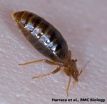(Press-News.org) STANFORD, Calif. - Stanford University researchers have developed a revolutionary, non-invasive way of quickly predicting the future health of premature infants, an innovation that could better target specialized medical intervention and reduce health-care costs.
"What the PhysiScore does is open a new frontier," said Anna Penn, MD, PhD, an assistant professor of pediatrics at the School of Medicine and a neonatologist at Lucile Packard Children's Hospital. "The national push toward electronic medical records helped us create a tool to detect patterns not readily seen by the naked eye or by conventional monitoring. We're now able to identify potential health problems before they become clinically obvious."
Penn is a co-senior author of the research, which will be published Sept. 8 in Science Translational Medicine. The other senior author is Daphne Koller, PhD, professor of computer science in the School of Engineering.
The paper's authors likened their PhysiScore to a more reliable, electronic version of an Apgar score. The Apgar, a simple, repeatable check done shortly after birth, has for more than half a century been the standard method of assessing a baby's physical well-being and predicting whether future medical treatment might be needed.
But by taking into account gestational age and birth weight and using a stream of real-time data routinely collected in neonatal intensive care units - such as heart rate, respiratory rate and oxygen saturation - the Stanford researchers developed a probability scoring system for the health of prematurely born infants that outperformed not only the Apgar but three other systems that require invasive laboratory measurements.
Koller noted that sophisticated computational methods are critical to identifying the subtle patterns in the complex data about these young patients, as well as helping clinicians and researchers accurately discriminate between the different outcomes.
"Our method is similar to fetal heart-rate monitoring, a tool that has profoundly changed management of labor," added Suchi Saria, the graduate student who led the research as part of her doctoral thesis in computer science. "Rather than observing a single physiological variable, however, we automatically integrate multiple physiological responses to improve accuracy."
"And the beauty is we don't have to stick anybody with a needle or do more expensive tests," said Penn. "Now we have the possibility of using the power of data already available in the intensive care unit to greatly improve care for premature infants."
The researchers relied on data recorded during the first three hours after an infant's birth as part of a computer algorithm that predicted the baby's likelihood of developing serious illnesses with an accuracy of between 91 and 98 percent. By comparison, the success of Apgar score predictions for the same conditions ranged from 69 to 74 percent.
In developing the PhysiScore system, the researchers studied 138 infants cared for in the neonatal intensive care unit of Packard Children's Hospital from March 2008 to March 2009. All the babies were born at 34 or fewer weeks of gestation and weighed less than 2,000 grams, or 4 lbs, 6.5 oz. None had major congenital malformations but all suffered complications that ranged from long-term disorders affecting multiple organ systems to relatively mild problems such as slight respiratory distress.
The PhysiScore proved particularly accurate in predicting the overall risk of life-threatening events in subgroups of infants who had intestinal infections and cardiopulmonary complications, even when these were not diagnosed until days or weeks later. The researchers said that adding lab tests, such as blood-gas measurements required for other scoring methods, was not needed to make PhysiScore highly accurate.
The study authors envision infants' PhysiScores being displayed on bedside monitors along with other vital measurements that would help guide care. "This could be done cheaply," Saria said. "The hardware, the bedside monitor, already exists. It would just be a matter of layering in new software that would display the PhysiScore."
The study said better neonatal risk assessment could have the practical effect of keeping more premature infants at their local birth centers, avoiding higher costs of specialized care and transportation and "thus potentially reducing the estimated $26 billion per year in U.S. health-care costs resulting from preterm birth."
Penn said many preterm babies have relatively good Apgar scores, even those infants who go on to develop serious health complications. "So now, with a PhysiScore, I could have two 25-week-gestation, 700-gram babies and know that they each have a very different individual risk profile," she said. "This really gives us another tool."
Saria added that although the initial research focused on assessing the health of preterm infants, "the state-of-the-art techniques we used produced a flexible framework that can be optimized for other patient populations. This should make these results of interest to a wide range of physicians and researchers."
The PhysiScore system must still go through additional testing before it could be considered for commercial use. Penn said the researchers hope to validate the new tool on a larger group of preterm babies, and study how it influences medical decision-making. "At the same time, we can try applying our methods to other groups of patients, such as children returning from surgery, to determine if there are similar early signals that can be integrated to predict complications during recovery," she said.
Koller emphasized the broader long-term potential of the new approach. "To achieve truly personalized medicine, we have to integrate an enormous amount of data: clinical symptoms, diagnostic test results, physiological data streams and, soon, genetic and genomic data," she said. "Computational methods derived from real patient records can deliver on the promise of personalized, evidence-based medicine."
INFORMATION:
Other co-authors include Jeffrey Gould, MD, MPH, professor of neonatology; and Anand Rajani, MD, a senior fellow in neonatology.
The study was funded by the Department of Computer Science, and additional information about the department is available at http://www.cs.stanford.edu/. More information about the Department of Pediatrics, which also supported the work, is available at http://pediatrics.stanford.edu/.
The Stanford University School of Medicine consistently ranks among the nation's top medical schools, integrating research, medical education, patient care and community service. For more news about the school, please visit http://mednews.stanford.edu. The medical school is part of Stanford Medicine, which includes Stanford Hospital & Clinics and Lucile Packard Children's Hospital. For information about all three, please visit http://stanfordmedicine.org/about/news.html.
Researchers design more accurate method of determining premature infants' risk of illness
2010-09-09
ELSE PRESS RELEASES FROM THIS DATE:
Researchers identify genes tied to deadliest ovarian cancers
2010-09-09
Scientists at the Johns Hopkins Kimmel Cancer Center have identified two genes whose mutations appear to be linked to ovarian clear cell carcinoma, one of the most aggressive forms of ovarian cancer. Clear cell carcinoma is generally resistant to standard therapy.
In an article published online in the September 8 issue of Science Express, the researchers report that they found an average of 20 mutated genes per each ovarian clear cell cancer studied. Two of the genes were more commonly mutated among the samples: ARID1A, a gene whose product normally suppresses tumors; ...
Study identifies critical 'traffic engineer' of the nervous system
2010-09-09
Athens, GA—A new University of Georgia study published in the journal Nature has identified a critical enzyme that keeps traffic flowing in the right direction in the nervous system, and the finding could eventually lead to new treatments for conditions such as Alzheimer's and Parkinson's disease.
"There was no medical or any other applied science drive for this project; it was purely curiosity about how transport inside cells works," said study co-author Jacek Gaertig, professor in the cellular biology department in the UGA Franklin College of Arts and Sciences. "But ...
Novel sensing mechanism discovered in dendritic cells to increase immune response to HIV
2010-09-09
New York, NY (September 8, 2010) – Dendritic cells are the grand sentinels of the immune system, standing guard 24/7 to detect foreign invaders such as viruses and bacteria, and bring news of the invasion to other immune cells to marshal an attack. These sentinels, however, nearly always fail to respond adequately to HIV, the virus causing AIDS. Now a team of scientists at NYU Langone Medical Center has discovered a sensor in dendritic cells that recognizes HIV, spurring a more potent immune response by the sentinels to the virus. They report their findings in the September ...
House-sharing with microbes
2010-09-09
Household dust contains up to 1000 different species of microbes, with tens of millions of individual bacterial cells in each gram. And these are just the ones that can be grown in the lab!
Dr Helena Rintala, speaking at the Society for General Microbiology's autumn meeting in Nottingham describes how we share our living and working spaces with millions of microbes, not all of whom are bad news.
Microbes are a part of our normal environment and can be both beneficial and detrimental to our health. "Exposure to microbes in childhood can prevent the development of allergies. ...
Yeast holds clues to Parkinson's disease
2010-09-09
Yeast could be a powerful ally in the discovery of new therapeutic drugs to treat Parkinson's disease says a scientist presenting his work at the Society for General Microbiology's autumn meeting in Nottingham today.
Dr Tiago Fleming Outeiro from the Instituto de Medicina Molecular in Lisbon, Portugal describes how his group is slowly uncovering the molecular basis of Parkinson's disease by studying the associated human protein in yeast cells.
Parkinson's disease is a neurodegenerative disorder without any known cure that affects around 6 million people worldwide. The ...
Why chromosomes never tie their shoelaces
2010-09-09
In the latest issue of the journal Nature, Miguel Godinho Ferreira, Principal Investigator at the Instituto Gulbenkian de Ciência (IGC) in Portugal, lead a team of researchers to shed light on a paradox that has puzzled biologists since the discovery of telomeres, the protective tips of chromosomes: while broken chromosome ends generated by DNA damage (such as radiation or cigarette smoke) are quickly joined together, telomeres are never tied to each other, thus allowing for the correct segregation of the genetic material into all cells in our body. Since telomeres erode ...
Anti-aphrodisiac protects young bedbugs
2010-09-09
Male bedbugs are known to be very unfussy when it comes to mating, mounting any well-fed bug they can see - regardless of age or gender. Researchers writing in the open access journal BMC Biology have discovered how immature bedbug nymphs, who would be harmed by the traumatic insemination technique practiced by the males, release alarm pheromones to deter this unwanted attention.
Vincent Harraca, from Lund University, Sweden, worked with a team of researchers to stage encounters between males and females or nymphs. He said, "The chemical communication, as well as the ...
Scots Pine shows its continental roots
2010-09-09
By studying similarities in the genes of Scots Pine trees, scientists have shown that the iconic pine forests of Highland Scotland still carry the traces of the ancestors that colonised Britain after the end of the last Ice Age, harbouring genetic variation that could help regenerate future populations, according to new results published in the journal Heredity.
The research was carried out by an international team from the Centre for Ecology & Hydrology, the Polish Academy of Sciences, the University of Edinburgh and the Macaulay Land Use Research Institute.
Today's ...
Study adds new clue to how last ice age ended
2010-09-09
As the last ice age was ending, about 13,000 years ago, a final blast of cold hit Europe, and for a thousand years or more, it felt like the ice age had returned. But oddly, despite bitter cold winters in the north, Antarctica was heating up. For the two decades since ice core records revealed that Europe was cooling at the same time Antarctica was warming over this thousand-year period, scientists have looked for an explanation.
A new study in Nature brings them a step closer by establishing that New Zealand was also warming, indicating that the deep freeze up north, ...
Investigating better endpoints for immunotherapy trials
2010-09-09
Cancer immunotherapy calls for revised clinical endpoints that differ from those used for chemotherapy, according to an article published online September 8 in The Journal of the National Cancer Institute.
Unlike chemotherapy, which acts directly on tumors, cancer immunotherapies exert their effects on the immune system, which may delay or change response patterns, perhaps owing to the dynamics of the immune system itself. For example, initial tumor burden may increase due to lymphocytic infiltration, because of T-cell proliferation, which is followed by lymphocyte-induced ...






